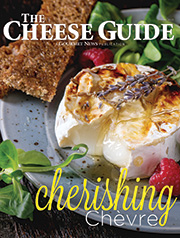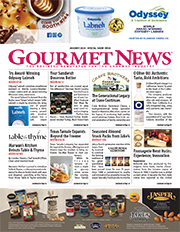AMC Theatres Partners With DoorDash to Deliver DINE-IN Eats
 AMC Theatres is collaborating with DoorDash to deliver its hand-crafted DINE-IN menu items from U.S based DINE-IN theater locations to guests at home, with plans to scale quickly to all of its more than 550 U.S. locations, in 121 markets, by spring of 2025.
AMC Theatres is collaborating with DoorDash to deliver its hand-crafted DINE-IN menu items from U.S based DINE-IN theater locations to guests at home, with plans to scale quickly to all of its more than 550 U.S. locations, in 121 markets, by spring of 2025.
In the past few years, movie guests have voted with their appetites, making it clear they want to enhance their moviegoing experience through AMC’s elevated food & beverage offerings. With food and beverage purchases growing year over year, AMC has responded by expanding its menu, creating more delicious offerings — and now by enhancing convenience through home delivery.
This new agreement between AMC and DoorDash ensures guests wanting AMC menu items can now have them conveniently delivered via DoorDash from 48 AMC DINE-IN locations directly to their home. Popular home delivery items include AMC’s Perfectly Popcorn, Nachos and even ICEEs. Combined with AMC’s previous deal with Uber Eats means, home delivery is now available from all of AMC’s more than 550 locations circuit wide, including:
DINE-IN LOCATIONS – All AMC DINE-IN menu items, made with fresh ingredients, are now available for home delivery via DoorDash from AMC’s 48 DINE-IN locations. Selections include everything from Loaded Bacon Fries or Tots and Fried Mozzarella to Wings, Chicken Tenders, Burgers, Flatbread Pizzas and more.
FEATURE FARE LOCATIONS – Uber Eats delivers AMC food to guests at AMC’s 500+ theatres that offer its complete FEATURE FARE menu items. Over the next few months, DoorDash will expand its service to all AMC locations as well. Menu items available range from Sliders and Bavarian Legend Pretzels to Donut Holes for dessert.
“Over the last decade, AMC’s significant investment in transforming and elevating the food and drink experience has revolutionized the phrase ‘movie theatre food,’ which in turn has led to many of our new offerings skyrocketing in popularity with moviegoers,” said Mo Haq, vice president – food & beverage operations, AMC Theatres. “We know our guests crave our signature food beyond the movie experience, such as our Dry Rub Wings, Royal Bacon Brie Burger or Loaded Bacon Tots, which is why we’re bringing their favorite flavors to them both in theater and through home delivery — meeting their tastes wherever they are. Working with DoorDash — and being able to satisfy cravings for AMC menu items with one click of a button — represents yet another win for AMC moviegoers.”
AMC is the largest movie exhibition company in the United States, the largest in Europe and the largest throughout the world with approximately 900 theatres and 10,000 screens across the globe. AMC has propelled innovation in the exhibition industry by: deploying its Signature power-recliner seats; delivering enhanced food and beverage choices; generating greater guest engagement through its loyalty and subscription programs, website, and mobile apps; offering premium large format experiences and playing a wide variety of content including the latest Hollywood releases and independent programming. In addition, in 2023 AMC launched AMC Theatres Distribution with the highly successful releases of TAYLOR SWIFT | THE ERAS TOUR and RENAISSANCE: A FILM BY BEYONCÉ. AMC Theatres Distribution expects to release more concert films with the world’s leading musical artists in the years ahead. For more information, visit www.amctheatres.com.
DoorDash is a technology company that connects consumers with their favorite local businesses in more than 30 countries across the globe. Founded in 2013, DoorDash builds products and services to help businesses innovate, grow, and reach more customers. DoorDash is your door to more: the local commerce platform dedicated to enabling merchants to thrive in the convenience economy, giving consumers access to more of their communities, and providing work that empowers.
For more news of interest to the snacks industry, subscribe to Gourmet News.
Ardagh Unveils 500ml Celebration Bottle
 Ardagh Glass Packaging-North America, an operating business of Ardagh Group, introduced a new 500ml Celebration bottle in flint (clear) glass to add to its growing portfolio of American-made bottles.
Ardagh Glass Packaging-North America, an operating business of Ardagh Group, introduced a new 500ml Celebration bottle in flint (clear) glass to add to its growing portfolio of American-made bottles.
The new 500ml (16.9oz) Celebration bottle is available initially in limited quantities for purchase on AGP-North America’s BOB site (BuyOurBottles). The bottle complements the existing 500ml Celebration in amber (brown) glass available from BOB’s collection of beer and beverage bottles.
Made using high-quality, traditional flint glass, designed and manufactured in the U.S., the bottles come pre-packaged in plain craft cardboard cases with partition dividers holding 12 glass bottles per case.
“Ardagh Glass Packaging continues to evolve its portfolio of American-made glass bottles on the BOB site to meet the demand of craft brewers and beverage producers,” said Rashmi Markan, vice president, beer & beverage for AGP-North America. “The new 500ml Celebration bottles in flint complement a wide variety of beverage brands who are interested in larger-format bottles, offering brand differentiation with a trusted, sustainable glass bottle that fully protects the flavor of their beverage.”
In 2012, AGP-North America launched the BOB site for beer – the first website to offer craft brewers the ability to purchase beer bottles online in pallet quantities, direct from the manufacturer, using a credit card or PayPal.
BOB’s portfolio now includes 11 beer and beverage bottles in both amber and flint glass color options, offering craft brewers and beverage producers increased flexibility for packaging their products.
AGP-North America and BOB are dedicated to the craft beer and beverage market with capabilities and resources to grow with craft brewers and beverage producers every stage of the way. For customers interested in purchasing bottles by the pallet, the BOB platform offers convenient online ordering, and payment via credit card or PayPal. For bottles in less than truckload (LTL) or truckload quantities, brewers can contact Ardagh directly at 636.299.5495 or marketing.glass.na@ardaghgroup.com.
To view Ardagh’s extensive glass beer bottle stock portfolio, which offers a variety of colors, sizes, styles and finishes all made in the U.S.A., visit ardaghgroup.com/beer2024.
For more news of interest to the food and beverage industry, subscribe to Gourmet News.
Seroogy’s Chocolates Celebrates 125th Anniversary
 Seroogy’s Chocolates, headquartered in De Pere, Wis., is celebrating its 125th anniversary throughout 2024, including a special event from noon until 3 p.m., Saturday, Sept. 28, with prizes, drawings, discounts, free samples and more.
Seroogy’s Chocolates, headquartered in De Pere, Wis., is celebrating its 125th anniversary throughout 2024, including a special event from noon until 3 p.m., Saturday, Sept. 28, with prizes, drawings, discounts, free samples and more.
Third generation owners brothers Jim and Joe Seroogy are the grandsons and great nephews of Joe, Jim and Sol Seroogy, who founded the company in 1899.
The original owners operated a sandwich shop in the Green Bay area in the late 1890s. One of the brothers made a batch of fudge one day and offered pieces to their lunch customers. Within a short time, the fudge and other chocolates outsold the sandwiches and the business transitioned into a candy store.
A former grocery store at 144 N. Wisconsin St., De Pere, became the home for the company’s retail store, production and shipping departments in 1992. Expanding sales led to the opening of a second retail store at 784 Willard Dr., Ashwaubenon, near the Green Bay Packer’s football stadium, in 2008. Customers can also make purchases directly from the company’s website, www.seroogys.com.
With a Wisconsin manufacturer’s license, Seroogy’s chocolatiers make more than 300 varieties of chocolate candies in various sizes, novelty chocolates for every season and caramel corn. Popular chocolates are Chocolate Meltaways, Pecan and Cashew Snappers (layered nuts, caramel and chocolate), English Toffee and Caramels.
In addition, Seroogy’s has offered a fundraising program to nonprofit community organizations throughout Wisconsin and beyond for more than 50 years.
The stores are a convenient one stop shop for gifts, special occasions, holidays and entertaining. Along with their homemade chocolates, they sell coffee and tea, nuts and snacks, seasonal candy, gourmet condiments, home décor, Green Bay Packer’s merchandise and greeting cards. Seroogy’s designers also create custom gifts on request for an individual or an entire list of clients and employees for a business.
Daniel Jauquet is the company’s general manager. Robert Foster is the retail manager at both sites. The stores are open every day except major holidays.
For more news of interest to the confections industry, subscribe to Gourmet News.








